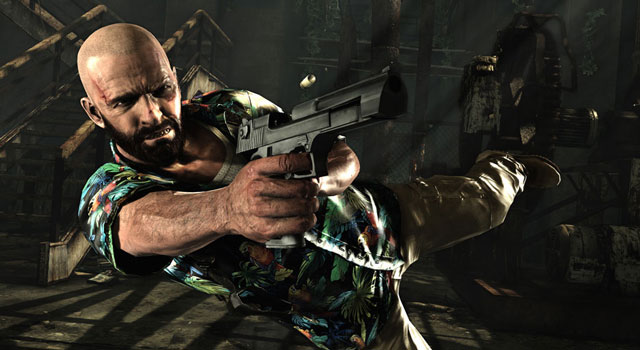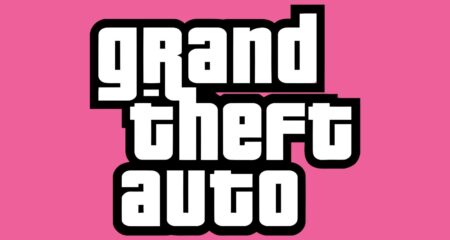Max Payne, first released in 2001, pointed the way to the future of the third-person shooter more than any other game released 10 years ago. Drawing on Hollywood realism as much as videogame convention and propelled as much by narrative as gameplay, it was the granddaddy of Uncharted, Gears of War, Alan Wake and the rest of today’s popular cinematic actioners.
Since we last saw the ex-cop with the constipated grimace in 2003, ownership of the franchise has changed from Finland’s Remedy Entertainment to Rockstar. But it has taken only a few tweaks, such as the addition of a Gears of War-style cover system and the obligatory on-rails shooting sections, to make the Max Payne formula feel completely contemporary.
Max Payne 3 resumes Max’s story years after the events of Max Payne 2. Addicted to painkillers and booze, Max is a weather-worn wreck of a man drowning in a sea of self-pity. He is forced to flee New Jersey and take up contract work as a bodyguard in Latin America after some nasty business involving the mob.
His involvement with a wealthy family in Sao Paulo draws him into an iniquitous conspiracy and offers him a chance for redemption. The game pulls you into an action-movie world that takes inspiration from sources such as Raymond Chandler, Elmore Leonard, Michael Mann and the Denzel Washington film Man on Fire.
Max Payne 3 puts the “bullet-time” hook of the earlier Max Payne games right at the centre of its gameplay. Bullet time allows Max to get the jump on his enemies by slowing down time around him while being able to aim and shoot at the normal speed. It is paired with the “shoot-dodge” mechanic where Max dives and shoots in slow motion.
The trick is that Max needs to wound and kill enemies to build up bullet time, and this is where the new cover system comes into play. You’re meant to cower behind walls and furniture while you build up your bullet time, giving the game a rhythm between playing it safe and going in for the kill.
That’s the theory. In reality, there is a tension between cover and bullet time that doesn’t always resolve in a satisfactory way. Playing the game on harder difficulty levels, you soon learn that Max is a little more fragile in bullet time than he was in earlier games.
Frustratingly often, you’ll dive out of cover like Chow Yun-Fat, only to get stuck on a low wall or table, lose your bullet time and promptly get killed. John Woo-like balletic movies are often a recipe for getting killed rather than for looking like a badass action hero.
Staying in cover often feels like the better option, especially given how long the gaps are between checkpoints in some parts of the game. And that makes Max Payne feel a little more like every other third-person shooter out there than it needs to. Max holds on to some of its old-school gameplay by eschewing regenerative health in favour of painkillers to restore health, just like the old games.
There are many stretches in the 10-12 hour campaign (perhaps an hour or two too long), where the new and old elements come together beautifully. The joys of watching a bullet splinter a bad guy’s head in slow motion are as visceral as they were 10 years ago.
At its best moments, Max Payne captures that action-movie poetry of time decelerating to a crawl with bullets travelling through the air as if it was made of viscous jelly before shredding wood, glass and flesh alike.

The Uncharted-like set pieces give new twists to cliched gaming scenarios like motorboat chases and narrow escapes from flaming buildings. And the “last stand” mechanic is neat. Provided Max has some painkillers, he can keep going if he shoots the enemy who tagged him with a fatal bullet.
I also like the fact that the stakes in the game feel high. Max is old and broken, barely a match for well-trained and heavily armoured paramilitary thugs and murderous gang members. He scrapes through gun battles only through dumb luck, feral instinct and utter desperation.
The game is pretty tough, even at medium difficulty, and deals out a stiff challenge in the hard, old-school and hardcore modes. “New York Minute” — an arcade-like mode where you are racing against a timer to complete levels and death means game over — is particularly punishing and probably only for the really dedicated.
Dan Houser, also responsible for Rockstar’s Red Dead Redemption and the Grand Theft Auto games, takes over writing duties from Sam Lake. It’s hard to think of someone better for the task, yet the writing is one the least satisfying aspects of Max Payne 3.
Houser normally has a sure feel for pulp fiction and pop culture references, but he struggles here to find the right tone. The story is interesting with some shocking (if contrived) twists, but the telling could have been handled with a little more elegance and restraint.
Where Lake’s hilarious hardboiled pastiche was soaked in black humour, Max Payne 3 seems to wallow in misery. After putting up with a few hours of Max’s emo whining, I was ready to shoot him myself. It doesn’t help that the in-game cinematics — which replace the stylish comic-book frames of the earlier games — are dreary, overlong and cannot be skipped.
HOW IT SCORES
Graphics 8/10
Evocative art-design, detailed settings and character models, and natural-looking animations make this one of the best –looking Rockstar games to date.
Sound 9/10
LA noise rock outfit provides a haunting and discordant score, while the original Max Payne James McCaffery and his supporting cast provide stellar voice work.
Gameplay 7/10
The gunplay is tight and satisfying, but level design is a little dull. Some long gaps between certain checkpoints might test your patience on higher difficulty levels.
Value 7/10
Arcade-like modes and a range of difficulty levels offer plenty of reasons to replay the campaign. Multiplayer offers a few hours of mindless fun, too.
Overall 8/10
Dripping in atmosphere and full of cool-as-ice action scenes, Max Payne 3 is a flawed yet worthy successor to Remedy’s classic games.
Max Payne 3 is rich in atmosphere. Sao Paulo — a weary Max describes it as “Baghdad in G-strings” in one of the game’s occasional flashes of humour — is as much the star of the game as Max himself is. Alongside the Renaissance Italy of Assassin’s Creed 2, it is one of the most remarkable pieces of city-building I have seen in a game.
It’s probably not a vision of Sao Paulo that the Brazilian tourist board would approve of. It’s city where the stench of corruption in opulent penthouses and glamorous nightclubs is as pungent as the grim poverty of the favelas. Other locales like New Jersey and Panama are realised as vividly.
Max Payne 3 features multiplayer for the first time in the series’ history. Feeling a bit like a hodgepodge of Call of Duty and Uncharted, it features an experience system to unlock new guns, skins and so on, a range of maps and modes, and the rest of the bells and whistles of a contemporary shooter.
Matchmaking seemed to work quite well when I played and the game offers up some quick, cheap multiplayer thrills. Aside from bullet time, it doesn’t bringing anything particularly new to the world. Map design isn’t particularly great, either. It’s a distraction from rather than a replacement for the best-in-class multiplayer games like Battlefield, Gears and Call of Duty. — (c) 2012 NewsCentral Media
- Now available on Xbox 360 (reviewed) and PlayStation 3. Coming in early June for Windows PC




